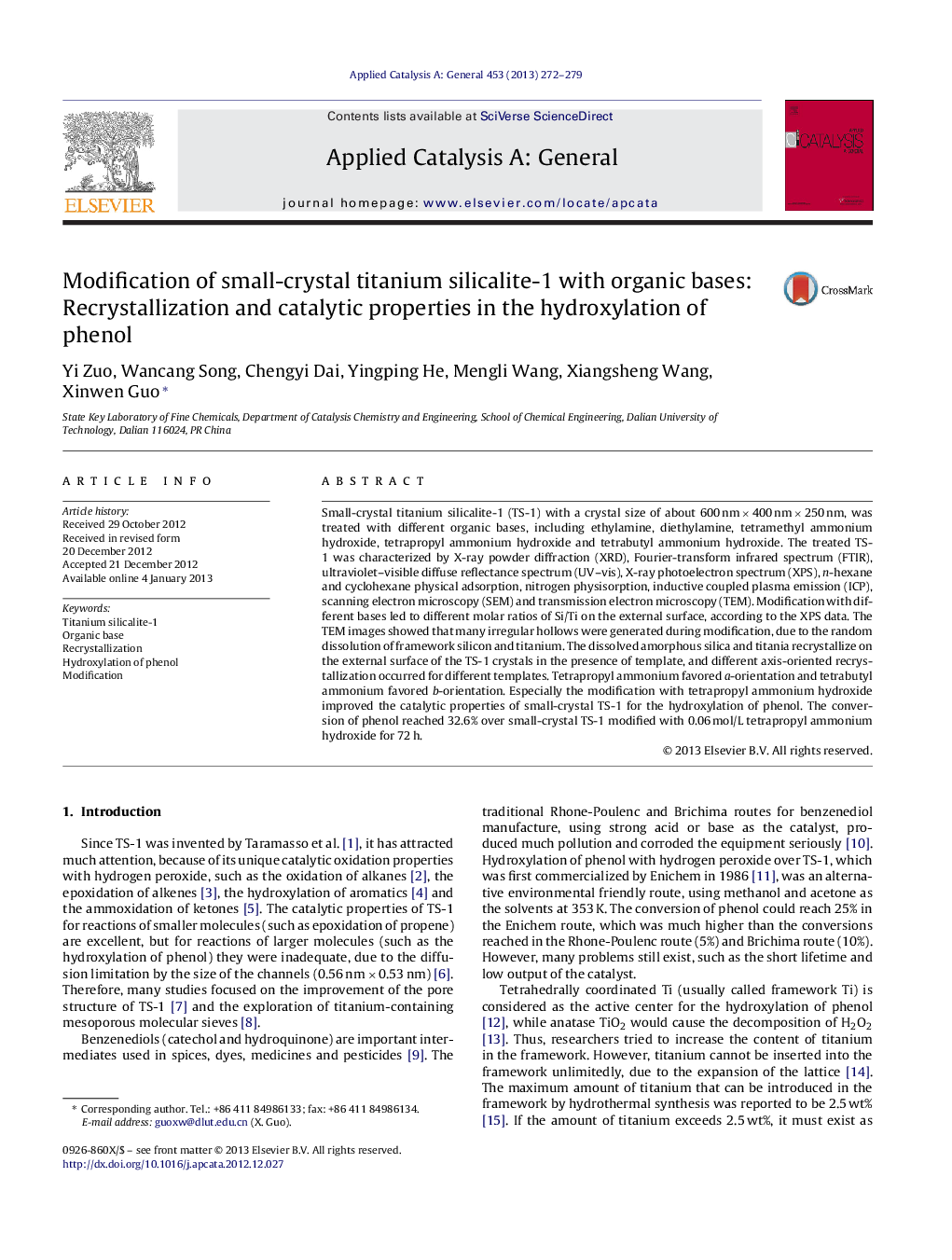| Article ID | Journal | Published Year | Pages | File Type |
|---|---|---|---|---|
| 40405 | Applied Catalysis A: General | 2013 | 8 Pages |
Small-crystal titanium silicalite-1 (TS-1) with a crystal size of about 600 nm × 400 nm × 250 nm, was treated with different organic bases, including ethylamine, diethylamine, tetramethyl ammonium hydroxide, tetrapropyl ammonium hydroxide and tetrabutyl ammonium hydroxide. The treated TS-1 was characterized by X-ray powder diffraction (XRD), Fourier-transform infrared spectrum (FTIR), ultraviolet–visible diffuse reflectance spectrum (UV–vis), X-ray photoelectron spectrum (XPS), n-hexane and cyclohexane physical adsorption, nitrogen physisorption, inductive coupled plasma emission (ICP), scanning electron microscopy (SEM) and transmission electron microscopy (TEM). Modification with different bases led to different molar ratios of Si/Ti on the external surface, according to the XPS data. The TEM images showed that many irregular hollows were generated during modification, due to the random dissolution of framework silicon and titanium. The dissolved amorphous silica and titania recrystallize on the external surface of the TS-1 crystals in the presence of template, and different axis-oriented recrystallization occurred for different templates. Tetrapropyl ammonium favored a-orientation and tetrabutyl ammonium favored b-orientation. Especially the modification with tetrapropyl ammonium hydroxide improved the catalytic properties of small-crystal TS-1 for the hydroxylation of phenol. The conversion of phenol reached 32.6% over small-crystal TS-1 modified with 0.06 mol/L tetrapropyl ammonium hydroxide for 72 h.
Graphical abstractFigure optionsDownload full-size imageDownload high-quality image (221 K)Download as PowerPoint slideHighlights► Small-crystal TS-1 was modified with different organic bases. ► The recrystallization occurred along different axis, when using different bases. ► TPA+ and TBA+ showed a protection effect on the framework Ti in the crystal. ► Hydroxylation reaction mainly occurred in the crystals, but not on the surface. ► The highest phenol conversion obtained, when using 0.06 mol/L TPAOH for 72 h.
